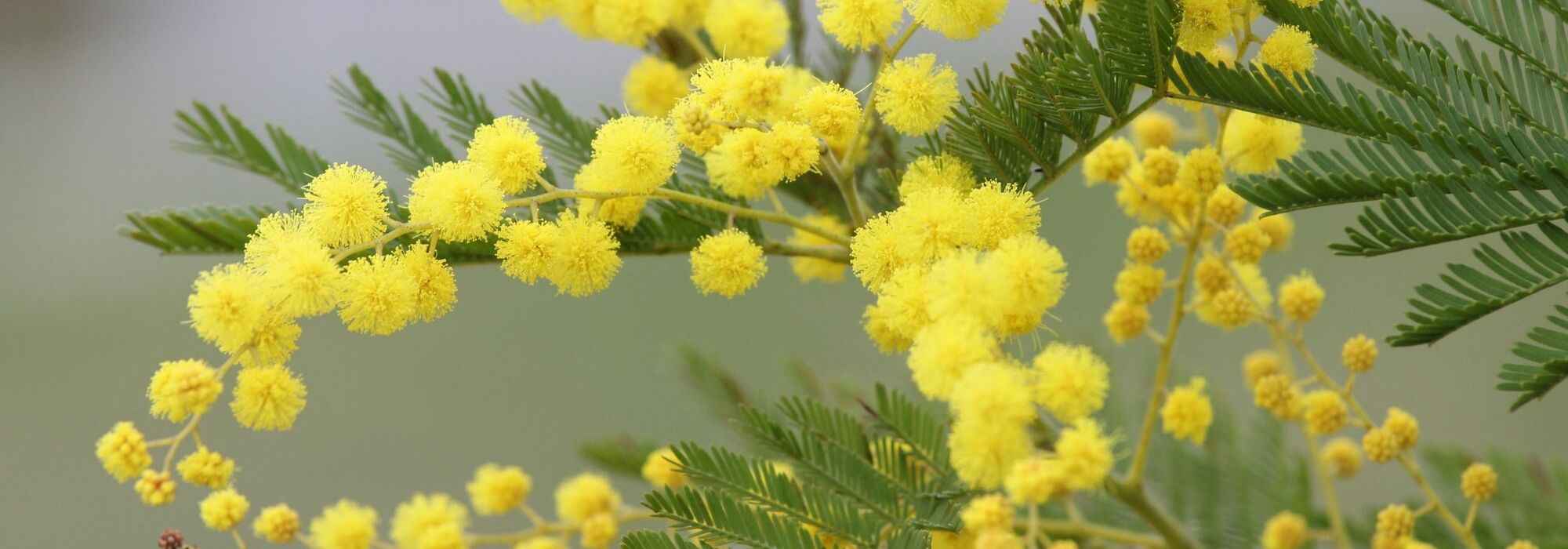
To grow mimosa in a pot
How to successfully cultivate a fragrant terrace or balcony
Contents
mimosa, with its fragrant yellow pom-poms, brightens gardens in late winter. Suited to mild climates, it can nevertheless enhance colder spaces or those without a garden thanks to pot cultivation. This technique allows it to be protected from cold by moving it to shelter during winter, enabling spectacular flowering on a terrace or balcony.
Growing a mimosa in a pot is achievable for everyone, even in cooler regions. Simply choose the right variety and follow a few key steps: select an appropriate container, choose a fertile substrate, and respect the plant’s water and light needs. These measures ensure abundant, fragrant flowering, transforming any outdoor space into a Mediterranean paradise.
From choice of variety to choice of container and substrate, we reveal our secrets to successfully grow mimosa in a pot!
Which mimosa to choose for growing in a pot?
To grow a mimosa in a pot, choose primarily varieties with a compact habit and moderate growth.
We recommend two varieties, particularly well suited to pot or container cultivation:
- Acacia dealbata ‘Gaulois Astier’ grafted : a mimosa with very fragrant flowers, grafted onto Acacia retinodes, hardy to -5 / -6 °C and which does not produce suckers
- Acacia retinodes ‘Lisette’ : this mimosa has a rounded, compact habit, reaching 4 m in every direction at maturity but will make a fine specimen in a pot because it does not produce suckers. It flowers several times a year!
In any case, note that a mimosa kept in a pot will grow more slowly and less than in open ground. It will tend to dwarf and will never reach excessive proportions, rarely exceeding 2 metres in height.
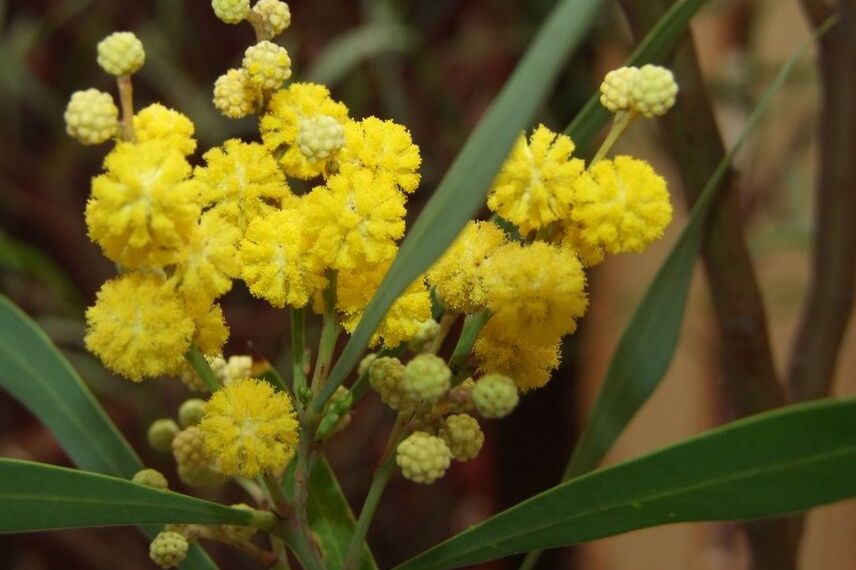
Acacia retinodes ‘Lisette’
Which pot for my mimosa?
To successfully grow a mimosa in a pot, choose a suitable container. Mimosa does not need an overly wide pot as it will flower better if it feels a little cramped; however, opt for a fairly deep container because its roots are substantial. Plant it in a pot slightly larger, from one-third to twice the size of the root ball.
An unglazed terracotta planter or an orangery tub 40 to 50 cm in diameter will suffice for a mature specimen about 3 m high. Make sure the bottom of the container has good drainage, as mimosa does not tolerate stagnant water!
Discover other Acacia - Wattle
View all →Available in 1 sizes
Available in 1 sizes
Available in 1 sizes
Available in 2 sizes
Available in 1 sizes
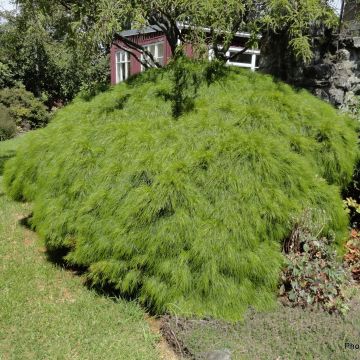
Available in 2 sizes
Available in 1 sizes
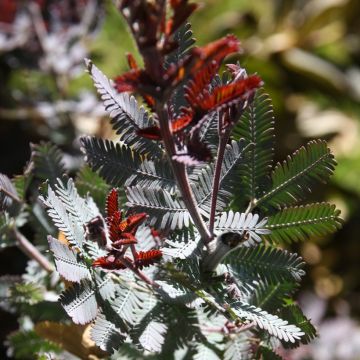
Available in 1 sizes
Available in 1 sizes
Which potting compost for potted mimosa?
Mimosa needs a very free-draining, fertile and light mix. It will grow better in a slightly acidic growing medium.
Make a mix made up of half heather soil and half potting compost or soil that is not too rich; add a handful of river sand so the growing medium is sufficiently free-draining.
When and how to plant your mimosa in a pot?
In less favourable regions, mimosa is best planted in spring, from March to June.
Planting steps :
- Spread a 3–5 cm layer of clay pebbles or gravel at the bottom of the pot
- Optionally place a landscape fabric or felt to prevent soil and roots from mixing with the drainage
- Add some of your substrate into the pot then position the rootball so that the collar is level with the top of the container
- Fill in with the remaining mix
- Firm down
- Water this young mimosa plant thoroughly
Where to place it ?
A sun-loving plant by nature, mimosa needs to be placed from April to October in a warm, very sunny position, receiving at least 4 hours of sun a day. Choose a spot sheltered from the wind. If you plan to move it for winter, be prepared and put the pot on a plant stand with castors.

How to care for your potted mimosa?
Here are a few simple care tips to keep it for a long time!
Watering mimosa in a pot
Watering mimosa in a pot is essential, especially during growing season (about once to twice a week). In a pot, potting mix dries out faster than in ground. It should remain moist but never waterlogged, otherwise roots risk suffocating and the plant may simply die.
- In summer: water moderately every day, preferably in the evening, especially in hot weather — the root ball should not dry out completely between waterings.
-
In winter: it needs less frequent watering. Water once a week, never let water stagnate in the saucer.
Fertilising mimosa in a pot
Not demanding in ground, mimosa can nevertheless benefit from fertilising when grown in a pot. Apply a flowering-plant fertiliser diluted in the watering can every fortnight from March–April to September.
Pruning mimosa in a pot
After flowering, shorten slightly branches that have flowered, by about half their length to maintain a denser habit and floriferous shoots.
To learn more: How to prune a Mimosa?
Repotting mimosa
It is recommended to repot mimosa every 2 years in spring after flowering into a container slightly larger but proportionate to tree size. If pot is too heavy to handle, simply top up surface each year:
- Scratch away surface soil to a depth of a few centimetres
- Replace removed soil with a mixture of compost and crushed horn, respecting the mimosa’s collar level
- Water thoroughly

How to protect your potted mimosa during winter?
This tree typical of the Côte d’Azur rarely tolerates frosts beyond -8°/-10°C, at best, because it is often weakened as soon as temperatures fall below -5°C. If your area is subject to severe frosts, cultivation in a pot is obligatory in order to overwinter it in shelter.
Between November and March, depending on region, overwinter your mimosa in a bright, cool room, in any case unheated, a greenhouse, a conservatory or a frost-free winter garden.
Take it outside again as soon as fine weather returns and when all risk of frost has passed!
Mimosa is not very susceptible to diseases and pests. If foliage yellows, it is chlorosis caused by excess lime in the substrate: preferably water with rain collected in a container and repot if necessary using half heather soil. Scale insects may sometimes attack it; first the bush turns pale then blackens. If this happens, spray with black soap and remove them manually with a cloth soaked in methylated spirits.
→Read: “Overwintering potted plants to protect them from the cold”
Further information
- Read our article to choose which mimosa to plant in your region
- Subscribe!
- Contents
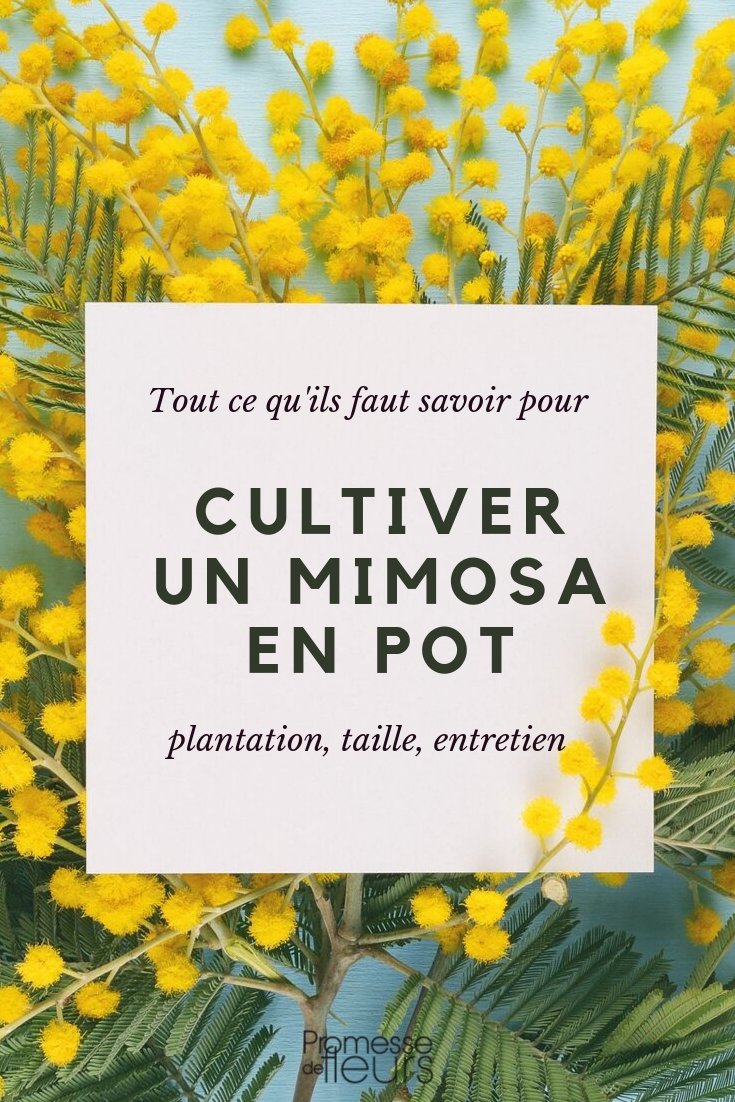
































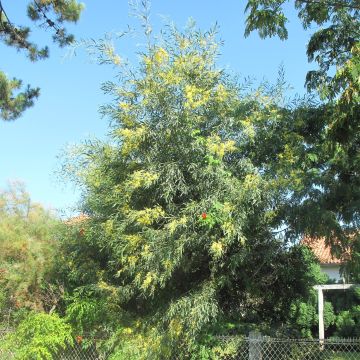
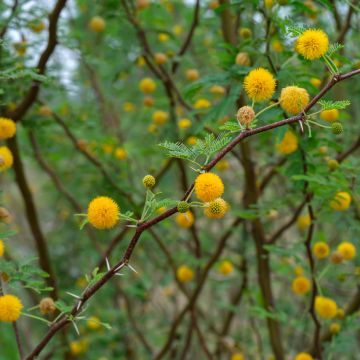


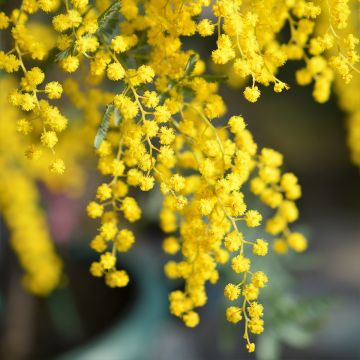
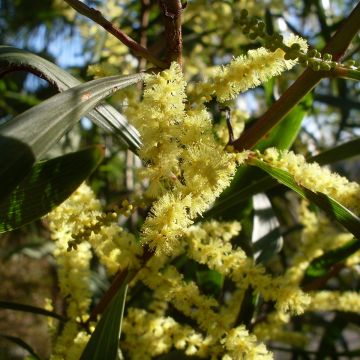

Comments